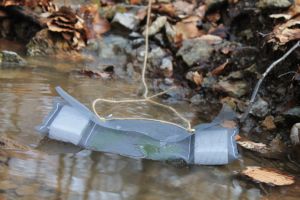The genus Phytophthora mainly comprises soil pathogens that attack their hosts’ fine roots, growing preferably in wet environments and likely to infect a wide range of plants. Some Phytophthora that affect woody species, such as Phytophthora alni, the causal agent in common alder blight, P. cambivora, associated with beech blight, or P. ramorum, responsible for sudden larch death, have been the subject of specific research at CRA-W for several years.
However, various studies show that the diversity of forest Phytophthora is still little known and that ignorance is due in particular to the difficulty of detecting these pathogens from complex matrices like soil or water. One detection method involving trapping makes use of Phytophthora’s ability to move through water with the aid of biflagellated spores. If a quantity of soil is placed in contact with water and rhododendron leaves, a plant species susceptible to many Phytophthora, for several days, any mobile Phytophthora spores in the soil will swim up to the leaves and infect them. The pathogen can then be isolated from cultures on a selective medium using small necroses that have subsequently formed on the leaf traps. Similarly, the presence of Phytophthora in river water can be revealed by floating little bags containing rhododendron leaves in the rivers concerned for several days.
Trapping is useful for researchers in that it enables live strains of Phytophthora from the soil or river to be captured. The method is currently being optimised at CRA-W but nevertheless remains heavily dependent on various criteria such as competition with other organisms occurring in the soil or river water and whether the time of year is favourable for trapping Phytophthora. However, the method is regularly applied in epidemiological studies of Phytophthora already identified in Wallonia. It is also currently being used in the context of the European RESIPATH project which CRA-W is participating in with the aim of studying the diversity of the Phytophthora occurring in the region’s forest soil and watercourses.

